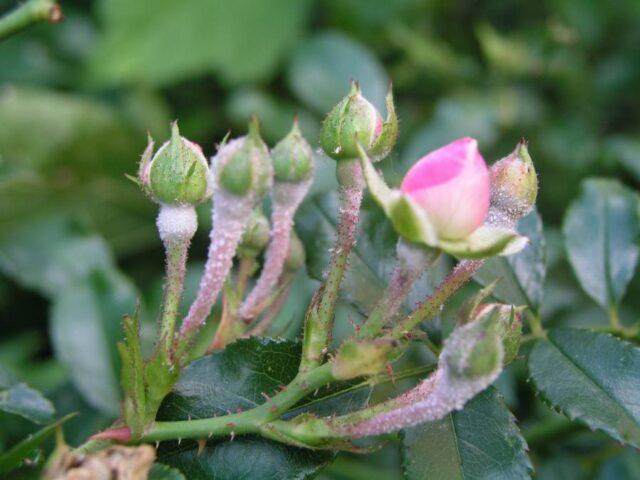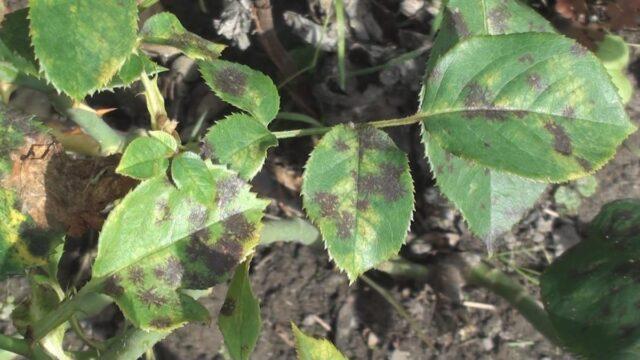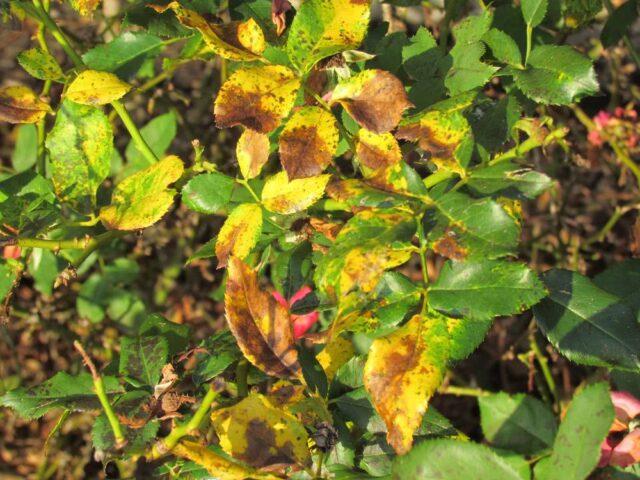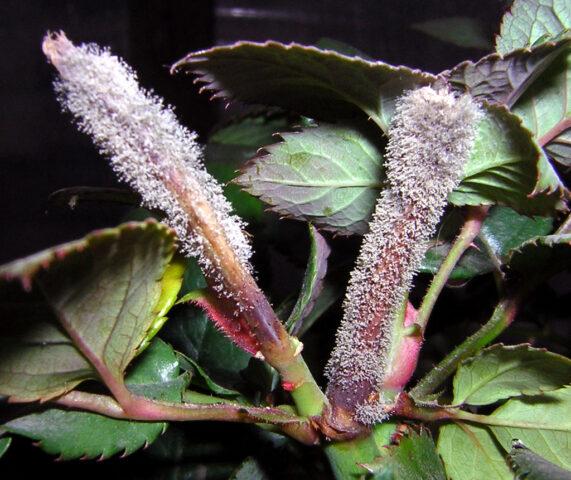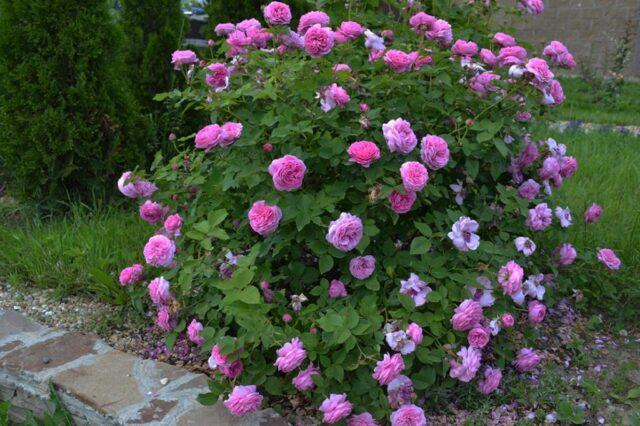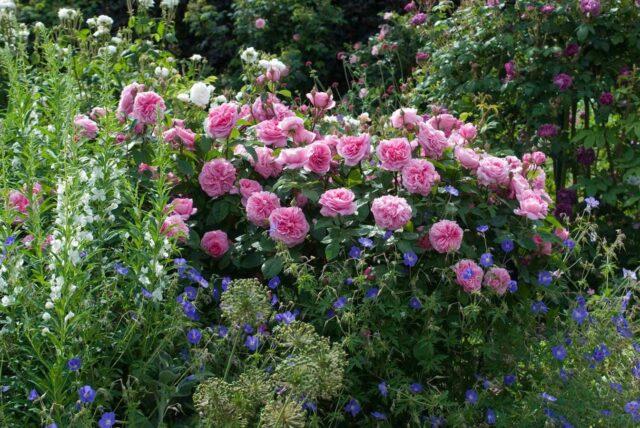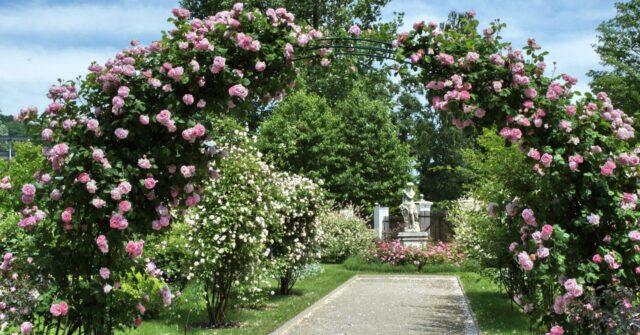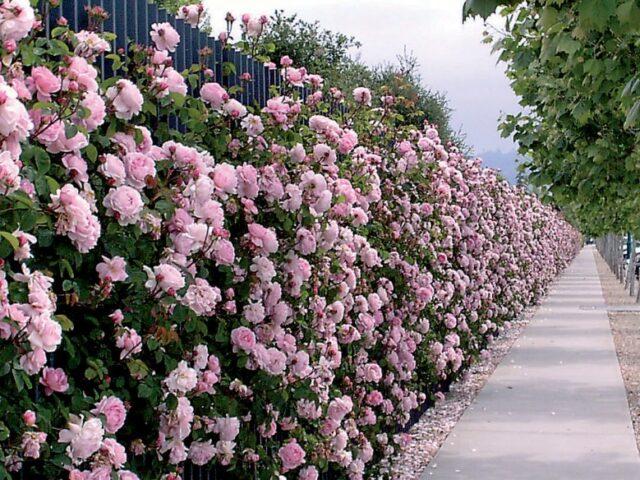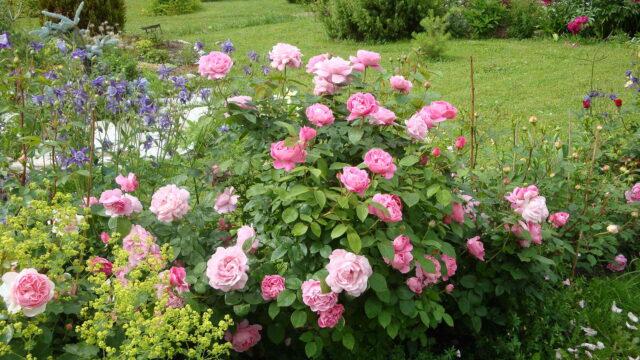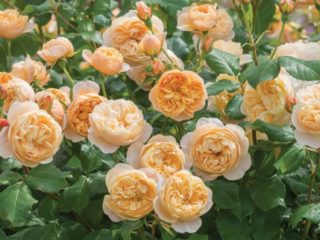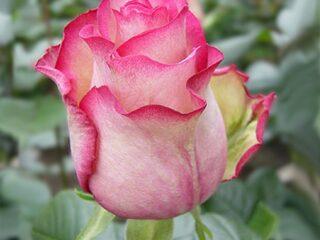Content
The park rose Louis Audier is a worthy representative of the magnificent Bourbon group. Thanks to its rich history and excellent characteristics, the popularity of the variety does not fall, gardeners continue to prefer it. Subject to the rules of agricultural technology and plant care, magnificent flowering can be observed already some time after planting.
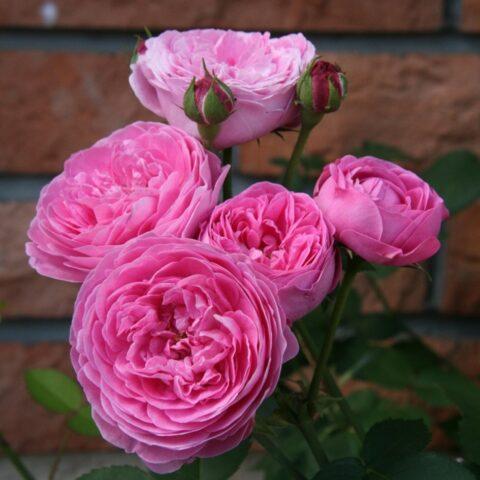
The park rose loves to grow in freedom, it needs space and reliable support
Breeding history
It is believed that the park rose is the result of the work of breeder James Audier, who worked on its breeding in the Bellevue nursery, located on the left bank of the Seine, near Paris. The botanist gave his creation the name (presumably) of his wife or daughter. In 1855, the owner of a private nursery, Jacques-Julien Margotten, bought the Louise Odier rose and brought it to England, receiving distribution rights.
The first specimens of this species were found on the island of Bourbon, located in the Indian Ocean. For this reason they received the name "Bourbon".
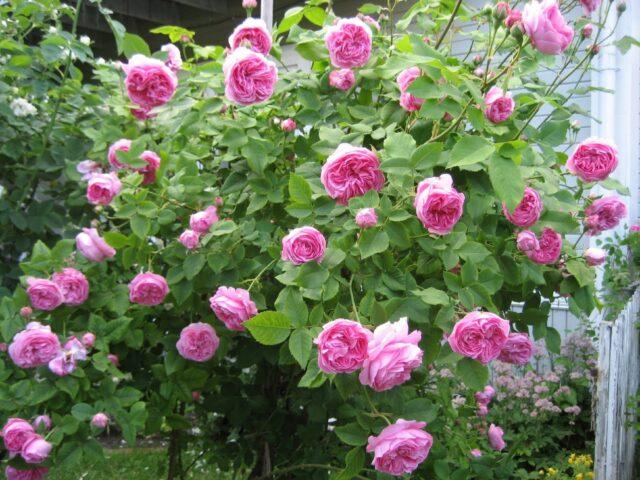
During the flowering period, the scent of the rose spreads throughout the area.
Description of park rose Louis Audier and characteristics
Park rose Louise Odier is a bush with erect shoots, the average height of which is 150 cm. The leaves are light green, glossy, densely cover the thorny stems. In warm climates and on fertile, well-moisturized soil, the Louis Audier rose looks like a climbing one, since the shoots reach a length of 3 m or more. The bush is spreading, its diameter is 1-2 m.
Double flowers 6-8 cm in the form of camellias. The number of petals in each is from 28 to 56. Their color is rich lilac with a brighter center. The stem blooms from four to six buds per cluster. The aroma is strong, at the beginning of flowering there is the smell of lemon candies, gradually giving way to the typical pink.
The Louis Odier variety belongs to the re-flowering, in favorable conditions it can give buds all summer, under the weight of which the shoots bend beautifully.
The plant belongs to the 4th zone of frost resistance, with minimal protection it can withstand temperatures up to -35 ⁰С. It has medium resistance to black spot and powdery mildew. In rainy weather, the buds may not open. You can help them bloom only by removing the brown and dried upper petals.
Advantages and disadvantages of the variety
Looking at the park rose Louis Audier, one gets the impression that it consists of some advantages. This is true, excluding some of the nuances.
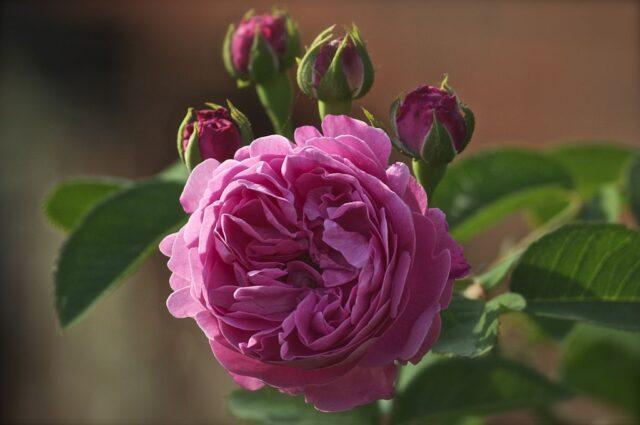
Due to its winter hardiness, the Louis Odier variety can be grown in the North-West region and Siberia.
Pros of the variety:
- the power of the bushes;
- beauty of flowers;
- a small number of thorns;
- the possibility of growing a park rose as climbing;
- delicate aroma;
- abundant and long flowering;
- frost resistance;
- unpretentious care.
Minuses:
- loss of decorativeness during rains;
- average resistance to diseases and pests;
- weak shade tolerance.
Reproduction methods
By purchasing a park-and-shrub rose Louis Audier in a nursery or a specialized store, the gardener receives a grafted plant. After a while, it can start to grow due to the shoots from the stock. In order for the rose to be rooted, vegetative propagation methods are used.
Layers
In the spring, Louis Audier is chosen on a park rose, a flexible, powerful shoot, laid in a prepared groove, after making cuts near the buds. Pinned with wooden staples, covered with soil. In the fall, the shoot is carefully dug up, cut off and divided into parts so that each has a root. "Delenki" are determined for growing on a separate ridge. A year later, they are transferred to a permanent place.
Cuttings
Cuttings from the park rose Louis Audier are harvested during the flowering period. Cut parts of shoots with three to five leaves, making the lower cut oblique, and the upper one straight. One half of the leaves is removed, the other is shortened. After treatment with a growth stimulant, the cuttings are planted in moist soil, deepening by 2-3 cm. A mini-greenhouse is created for each and looked after, maintaining the temperature and humidity. Having rooted the planting material, it is grown for another year, after which it is transplanted.
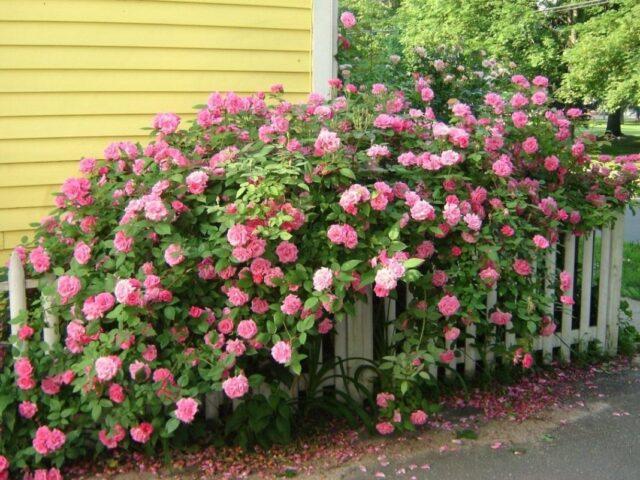
Frequent watering can lead to root rot
Offspring
Own-rooted park roses can be propagated by offspring. They grow next to the main stem, covering some distance underground. Shoots are removed from the mother plant one year after emergence. To do this, they rake off the earth, cut the root connecting it to the bush with a knife or a shovel.
By dividing the bush
The bush of the park rose Louis Audier is carefully dug, freed from the ground and divided into parts with a disinfected tool. The cuts of the roots are treated with coal and the "delenki" are planted in a permanent place.
Growing and care
To plant a rose, you need to choose the right place for the seedling. It should be sunny, away from tall trees, buildings and fences. Drafts and location under water drains are unacceptable.
For the correct planting of the park rose Louis Audier, perform a number of sequential actions:
- Prepare a pit 60 cm deep and 50 cm wide.
- Lay the hydrogel on the bottom, if the soil is sandy, peat and humus - on clay.
- Fertilizer is added.
- Pour the soil with a mound and set a seedling on it.
- The voids are filled with soil and tamped a little.
- Watering.
Caring for a young seedling consists in regular watering, feeding, pruning and preparing for the winter period.
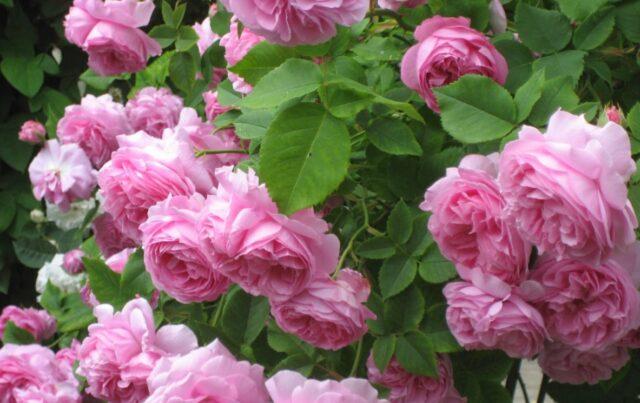
Rosa Luis Audier is very fond of warmth, but also tolerates cold snaps
Watering
Rose Louis Audier requires rare but regular watering. Water consumption is 20 liters per plant. Such a regime is necessary so that the roots penetrate deep into the soil in search of moisture. With surface irrigation, they are located in the upper layers of the soil, which is fraught with freezing in winter.
Top dressing
To stimulate flowering in spring, the park rose Louis Odier is fed with a sodium humate solution and the foliage is treated with a growth stimulant. Application of mineral fertilizers three times per season can increase the splendor of the crown. In summer, the rose is watered with infusion of ash to stimulate the bookmark of flower buds next year.
Pruning
Sanitary pruning is done in April by removing damaged, diseased or injured branches. The first time the operation is performed no earlier than two years after planting.
The removal of branches is necessary for thinning the crown and healing the plant. The remaining stems are shortened by three buds, and the longest ones are cut by at least 60 cm. All shoots growing below the graft are also subject to removal.
Preparing for winter
Park rose Louis Odier requires shelter for the winter only in regions with a harsh climate. To do this, the base of the bush is spud high, the lashes are removed from the support and covered with non-woven material, spruce branches, dry grass, creating conditions for periodic airing of the rose.
Pests and diseases
Despite the fact that the park rose Louis Audier has a strong immunity, in conditions of high humidity, a number of diseases can be affected:
- Powdery mildew - a white, lime-like coating that causes the leaves to dry out.
- Black spot - dark streaks on sheet plates.
- Rust - orange spores, swelling and growth.
- Gray rot - a fluffy brownish bloom.
In order to combat pathologies, use "Fundazol", "Topaz", copper sulfate, Bordeaux liquid.
The abundant flowering and growth of the rose can be disrupted by the defeat of pests:
- aphids;
- sawfly;
- leaf roll;
- goldfish;
- spider mite.
For the destruction of insects, insecticides are used - "Decis", "Rovikurt" and their analogues.
Application in landscape design
The park rose Louis Audier is a real decoration of the garden. Cascading shoots with a lot of lilac flowers look spectacular in different versions:
- When located in separate landings.
- In combination with other shrubs or perennials.
- For vertical gardening of verandas, gazebos and walls of the house.
- A rose looks beautiful on a support in the form of an arch and a column.
- Several bushes, planted side by side, form a hedge.
Conclusion
Park rose Louis Audier is a time-tested variety. He is able to decorate any site, regardless of its shape, location and other features. Spending very little time, you can change the territory, giving it its uniqueness thanks to its bright and abundant flowering.
